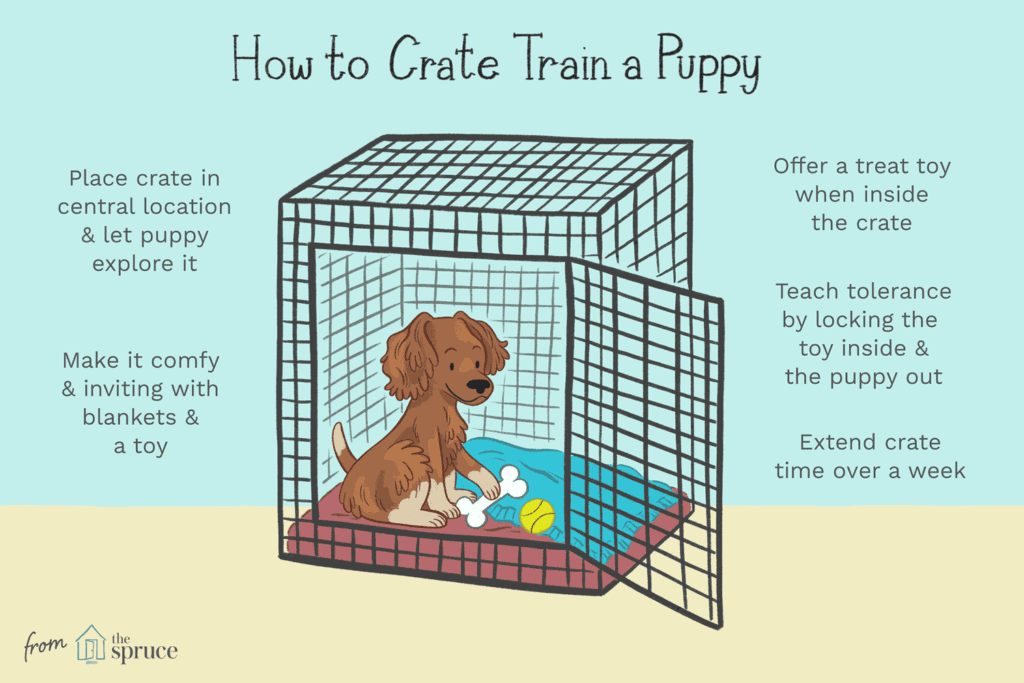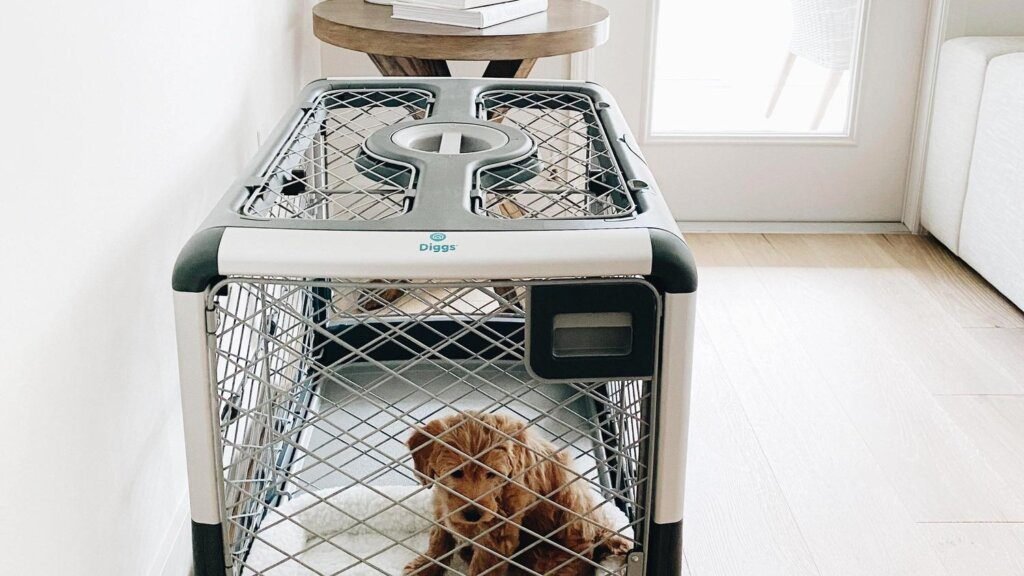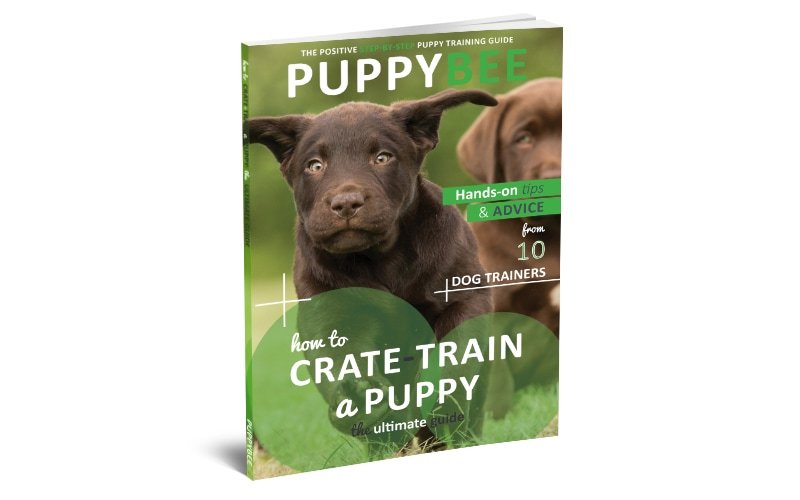Table of Contents
Have you recently welcomed a new furry friend into your family? If so, then crate training is an essential step in ensuring a happy and well-behaved puppy. In this ultimate guide, you will discover everything you need to know about crate training, from the benefits it offers to the step-by-step process of introducing your puppy to their crate. With this invaluable information at your fingertips, you’ll be well-equipped to create a safe and comfortable space for your puppy to call their own, while also establishing good behavior habits and helping them feel secure in their new home. Get ready to embark on an exciting journey as you learn the ropes of crate training your puppy!

Choose the Right Crate
Choosing the right crate for your puppy is an important first step in crate training. There are different types of crates to consider, such as wire crates, plastic crates, and soft-sided crates. Each type has its own advantages and disadvantages, so it’s essential to choose one that suits your puppy’s needs, as well as your lifestyle.
When selecting a crate, it’s crucial to consider the size of your puppy. The crate should be large enough for them to stand up, turn around, and lie down comfortably. However, it shouldn’t be too big, as a crate that is too large may encourage your puppy to eliminate in one corner and sleep in another. It’s best to choose a crate with a divider panel that allows you to adjust the size as your puppy grows.
Another factor to consider is the material of the crate. Wire crates are popular due to their durability, ventilation, and visibility. Plastic crates, on the other hand, provide a cozy and den-like environment for your puppy. Soft-sided crates are lightweight and portable, making them suitable for travel. Consider your puppy’s comfort and safety when selecting the material of the crate.
Prepare the Crate
Before introducing your puppy to the crate, it’s important to find a suitable location for it. Choose an area of your home that is quiet, easily accessible, and in close proximity to where you spend most of your time. This will allow your puppy to feel secure and be a part of the family even when they are in the crate.
Make the crate a comfortable and inviting space for your puppy. Place a soft bedding, such as a blanket or a crate pad, inside the crate to provide a comfortable surface for your puppy to rest on. You may also consider adding a few toys and treats to make the crate a positive and enjoyable environment for your puppy.
Introduce the crate gradually to help your puppy develop a positive association with it. Start by leaving the crate door open and allowing your puppy to explore it at their own pace. Encourage them to enter the crate with treats and praise. Avoid forcing your puppy into the crate or closing the door on them too soon. Gradual introduction will help your puppy feel comfortable and at ease in the crate.
Create a Positive Association
Creating a positive association with the crate is crucial for successful crate training. Use treats and rewards to help your puppy associate the crate with something positive. Whenever your puppy voluntarily enters the crate or lies down inside it, reward them with a treat and praise. This positive reinforcement will help your puppy understand that going into the crate is a desirable behavior.
In addition to treats and rewards, you can also associate the crate with fun activities. Place your puppy’s favorite toys or chews inside the crate to entice them to go in. Play games near the crate, such as fetch or tug-of-war, to make the crate a fun and engaging environment for your puppy. By creating positive associations with the crate, your puppy will be eager to go inside and view it as a comfortable and enjoyable space.
It’s important to avoid any negative associations with the crate. Never use the crate as a form of punishment or confinement. Do not scold or yell at your puppy when they are in the crate. The crate should always be a positive and safe space for your puppy, and any negative associations can hinder their progress in crate training.
Establish a Crate Training Schedule
Establishing a crate training schedule will help your puppy adjust to the routine and develop good crate habits. Set regular feeding times for your puppy and ensure they have ample opportunity to go outside for potty breaks before being crated. This will help prevent accidents inside the crate and promote good toilet training habits.
Introduce regular potty breaks to your puppy’s daily routine. Take them outside to their designated potty area before and after each crate session. This will help reinforce the idea that going to the bathroom should be done outside, not inside the crate. Consistency is key in establishing good potty training habits.
Start with short crate sessions and gradually increase the time your puppy spends in the crate. Begin by having your puppy stay in the crate for just a few minutes at a time and gradually extend the duration. This will help your puppy become familiar and comfortable with being in the crate for longer periods.

Introduce Crate Training Commands
Introducing crate training commands will help your puppy understand what is expected of them when they are in the crate. Choose command words that you will consistently use, such as “crate” or “kennel.” Use these command words when you want your puppy to enter the crate and associate them with the action of going inside.
Teach your puppy basic commands, such as “sit” or “down,” both inside and outside the crate. This will help them understand that these commands apply in different environments. Practice these commands consistently, rewarding your puppy with treats and praise when they respond correctly.
Incorporate the crate into your command training sessions. Have your puppy practice commands inside the crate, such as sitting or lying down. This will help them associate the crate with positive and familiar behaviors, further reinforcing their positive association with the crate.
Implement a Gradual Training Process
Implement a gradual training process to ensure your puppy’s comfort and success in crate training. Start with short crate sessions and gradually increase the time your puppy spends in the crate. This will help them adjust to being confined and minimize any anxiety or stress they may experience.
Begin by having your puppy stay in the crate for just a few minutes at a time. Gradually increase the duration to 10 minutes, then 20 minutes, and so on. Observe your puppy’s behavior during each crate session and ensure they are calm and relaxed before extending the time further.
As you increase the duration of crate time, it’s important to also leave the room for short periods. This will help your puppy become accustomed to being alone in the crate without feeling anxious or distressed. Start by leaving the room for just a minute or two, and gradually increase the time as your puppy becomes more comfortable.

Addressing Whining and Barking
Whining and barking are common behaviors that puppies may exhibit during crate training. It’s important to understand the causes behind these behaviors and address them appropriately.
Whining and barking can be a sign of anxiety or discomfort. Ensure that your puppy’s basic needs are met, such as having gone outside for a potty break and not being hungry or thirsty. If your puppy continues to whine or bark while in the crate, teach them calming techniques, such as deep breathing or providing them with a toy or chew to help alleviate their stress.
Avoid reinforcing unwanted behavior. When your puppy whines or barks, avoid giving them attention or letting them out of the crate until they have quieted down. Rewarding their whining or barking with attention can reinforce this behavior and make it more difficult to eliminate.
Using Crate for Nighttime Sleep
Using the crate for nighttime sleep is an effective way to establish a routine and promote good sleep habits for your puppy. Establishing a bedtime routine is important to help your puppy wind down and associate the crate with sleep.
Create a consistent bedtime routine that includes activities such as a short walk, brushing their teeth, or playing a calming game. This routine signals to your puppy that it is time to settle down and sleep.
Comfort your puppy before bedtime. Spend a few minutes with them near the crate, providing gentle pets and reassurance. This will help them feel secure and relaxed before settling into the crate for the night.
Limit nighttime access to water to avoid accidents. Remove their water bowl a few hours before bedtime to reduce the likelihood of needing to go outside during the night. Be sure to provide ample opportunities for your puppy to drink water throughout the day to prevent dehydration.

Handling Accidents and Cleaning
Accidents may happen during the crate training process, especially if your puppy has not yet fully grasped potty training. It’s important to address accidents promptly and clean the crate properly to prevent lingering odors and the development of negative associations.
Implement accident prevention techniques, such as taking your puppy outside for frequent potty breaks and supervising them closely when they are out of the crate. This will help reduce the likelihood of accidents occurring.
When accidents do happen, it’s important to clean and deodorize the crate thoroughly. Use an enzymatic cleaner specifically designed for pet accidents to eliminate urine or feces odors. Follow the manufacturer’s instructions carefully to ensure thorough cleaning.
Avoid using harsh cleaning products that may contain toxic chemicals that can be harmful to your puppy. Opt for pet-safe cleaning products to maintain a safe and healthy environment for your furry friend.
Gradually Transitioning to Unsupervised Freedom
As your puppy progresses in crate training, you can gradually transition them to unsupervised freedom in your home. Monitor their progress and behavior closely to ensure they are ready for this next step.
Observe your puppy’s behavior during short unsupervised periods. Start with just a few minutes and gradually increase the duration as they become more comfortable. If your puppy shows signs of anxiety or engages in destructive behavior, it may be an indication that they need more time in crate training before being granted unsupervised freedom.
Continuing with positive reinforcement is key. Reward your puppy for good behavior, such as remaining calm and not engaging in destructive behavior, when they are given unsupervised freedom. This will further reinforce their positive association with the crate and encourage them to continue exhibiting good behavior.
Crate training a puppy takes time, patience, and consistency. By choosing the right crate, preparing it properly, and implementing a gradual training process, you can help your puppy develop positive associations with the crate and build good habits. With dedication and positive reinforcement, you and your puppy can enjoy the benefits of a well-trained and comfortable crate environment.




